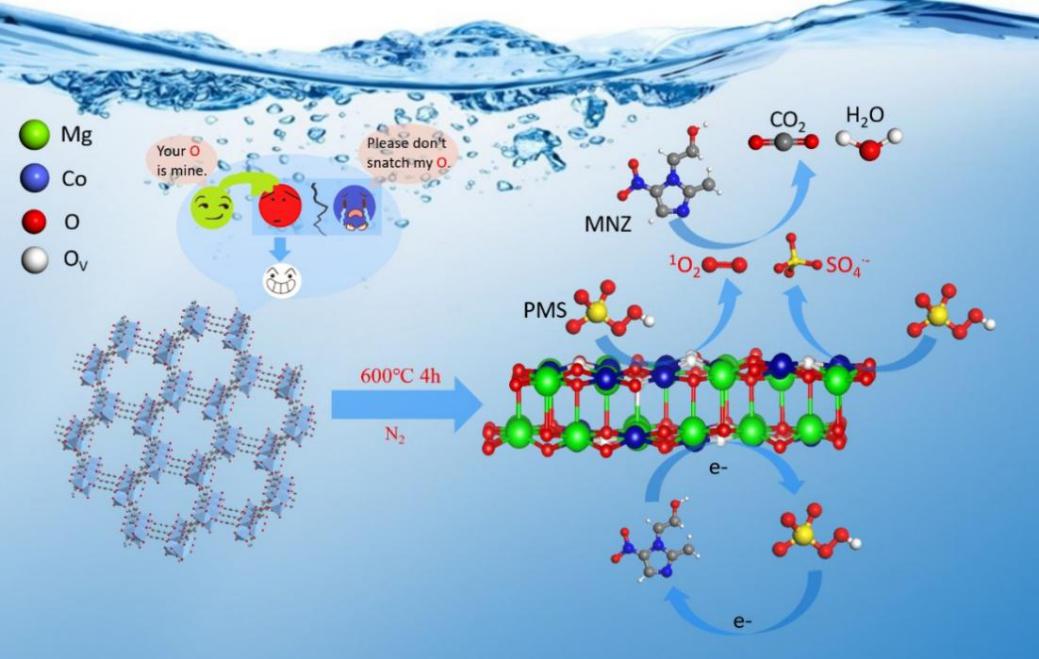Recently, The team of Professor Feng Qingge from SKL is entitled "A novel strategy of high oxygen vacancy concentration regulation for promoting the formation of nonradical species in the directional activation of peroxymonosulfate" was published in the Chemical Engineering Journal.

In this study, a porous carbon catalyst (Co1(MgO)1/C) derived from the idea of “reducing metal element/irreducible oxides” was successfully synthesized, characterized and used to activate PMS for removing metronidazole (MNZ) from water. The Co1(MgO)1/C presented excellent catalytic performances on PMS activation for MNZ removal in a wide pH range and complex water environments. Various advanced characterization technologies and density functional theory (DFT) calculations indicated that Co1(MgO)1/C possessed a high concentration of oxygen vacancies (OV) (OV = 51.3%), which successfully induced the triple degradation pathway of MNZ in the Co1(MgO)1/C-PMS systems. Further analysis revealed that the triple MNZ degradation pathway was dominated by singlet oxygen, and supplemented by sulfate radical and electron transfer. Consequently, this study not only expands the existing synthesis methods for high-concentration OV materials but also provides new insights into the directional regulation of non-radical degradation pathways of pollutants.